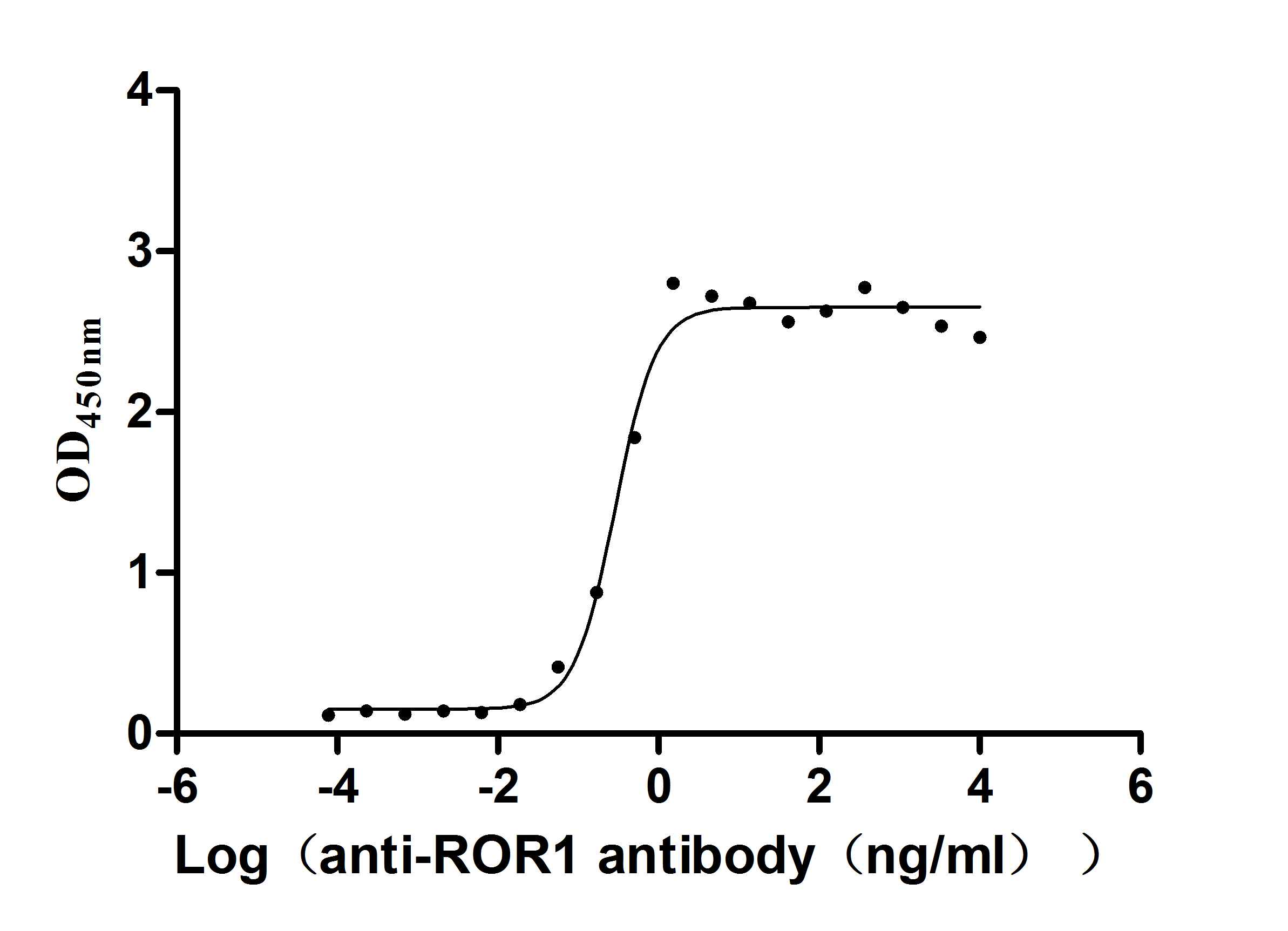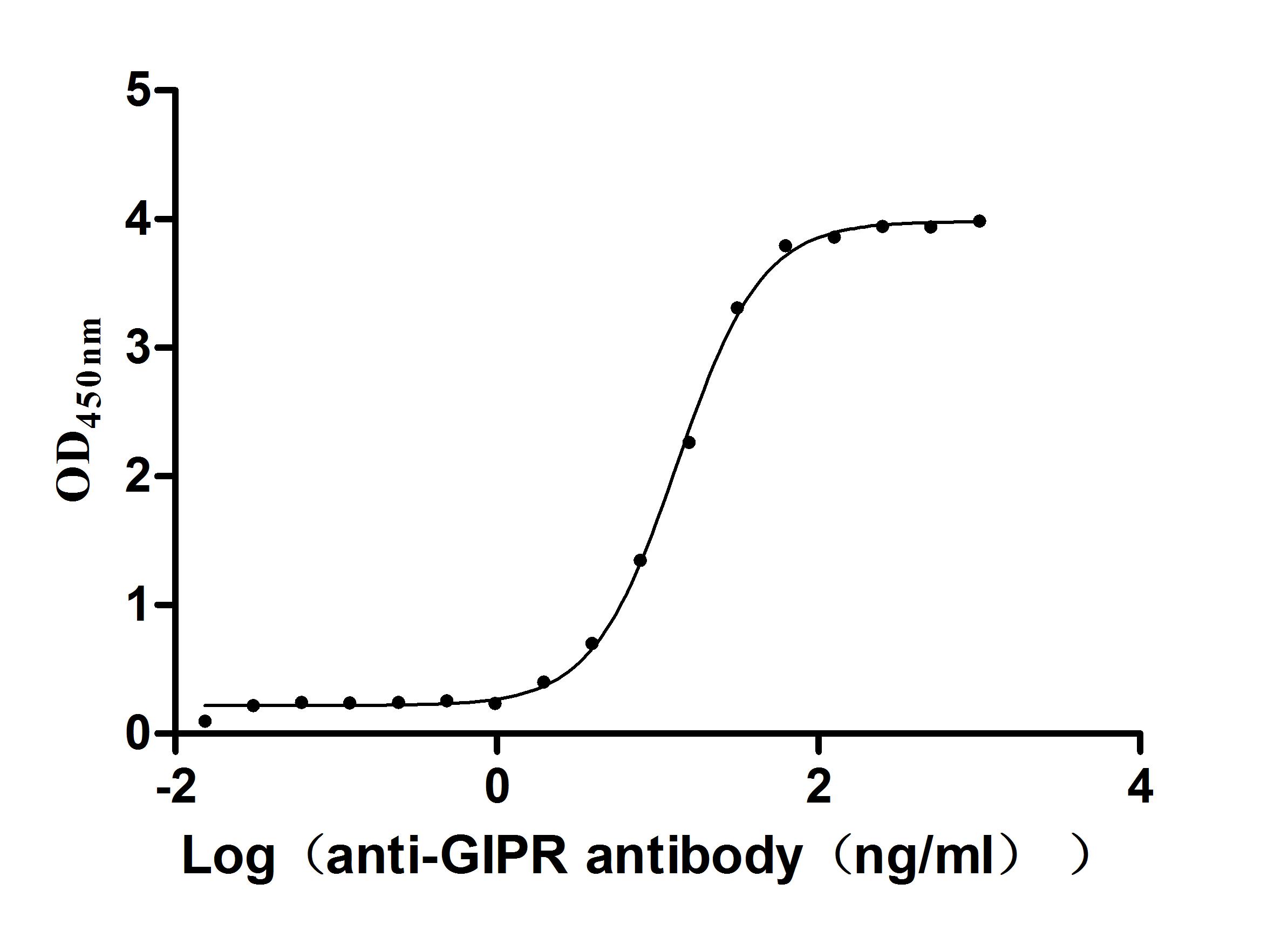Recombinant Mouse Tripartite motif-containing protein 72 (Trim72)
-
中文名称:小鼠Trim72重组蛋白
-
货号:CSB-YP638529MO
-
规格:
-
来源:Yeast
-
其他:
-
中文名称:小鼠Trim72重组蛋白
-
货号:CSB-EP638529MO-B
-
规格:
-
来源:E.coli
-
共轭:Avi-tag Biotinylated
E. coli biotin ligase (BirA) is highly specific in covalently attaching biotin to the 15 amino acid AviTag peptide. This recombinant protein was biotinylated in vivo by AviTag-BirA technology, which method is BriA catalyzes amide linkage between the biotin and the specific lysine of the AviTag.
-
其他:
-
中文名称:小鼠Trim72重组蛋白
-
货号:CSB-BP638529MO
-
规格:
-
来源:Baculovirus
-
其他:
-
中文名称:小鼠Trim72重组蛋白
-
货号:CSB-MP638529MO
-
规格:
-
来源:Mammalian cell
-
其他:
产品详情
-
纯度:>85% (SDS-PAGE)
-
基因名:Trim72
-
Uniprot No.:
-
别名:Trim72; Mg53; Tripartite motif-containing protein 72; Mitsugumin-53; Mg53
-
种属:Mus musculus (Mouse)
-
蛋白长度:full length protein
-
表达区域:1-477
-
氨基酸序列MSAAPGLLRQ ELSCPLCLQL FDAPVTAECG HSFCRACLIR VAGEPAADGT VACPCCQAPT RPQALSTNLQ LSRLVEGLAQ VPQGHCEEHL DPLSIYCEQD RTLVCGVCAS LGSHRGHRLL PAAEAQARLK TQLPQQKMQL QEACMRKEKT VAVLEHQLVE VEETVRQFRG AVGEQLGKMR MFLAALESSL DREAERVRGD AGVALRRELS SLNSYLEQLR QMEKVLEEVA DKPQTEFLMK FCLVTSRLQK ILSESPPPAR LDIQLPVISD DFKFQVWKKM FRALMPALEE LTFDPSSAHP SLVVSSSGRR VECSDQKAPP AGEDTRQFDK AVAVVAQQLL SQGEHYWEVE VGDKPRWALG VMAADASRRG RLHAVPSQGL WLLGLRDGKI LEAHVEAKEP RALRTPERPP ARIGLYLSFA DGVLAFYDAS NPDVLTPIFS FHERLPGPVY PIFDVCWHDK GKNAQPLLLV GPEQEQA
-
蛋白标签:Tag type will be determined during the manufacturing process.
The tag type will be determined during production process. If you have specified tag type, please tell us and we will develop the specified tag preferentially. -
产品提供形式:Lyophilized powder
Note: We will preferentially ship the format that we have in stock, however, if you have any special requirement for the format, please remark your requirement when placing the order, we will prepare according to your demand. -
复溶:We recommend that this vial be briefly centrifuged prior to opening to bring the contents to the bottom. Please reconstitute protein in deionized sterile water to a concentration of 0.1-1.0 mg/mL.We recommend to add 5-50% of glycerol (final concentration) and aliquot for long-term storage at -20℃/-80℃. Our default final concentration of glycerol is 50%. Customers could use it as reference.
-
储存条件:Store at -20°C/-80°C upon receipt, aliquoting is necessary for mutiple use. Avoid repeated freeze-thaw cycles.
-
保质期:The shelf life is related to many factors, storage state, buffer ingredients, storage temperature and the stability of the protein itself.
Generally, the shelf life of liquid form is 6 months at -20°C/-80°C. The shelf life of lyophilized form is 12 months at -20°C/-80°C. -
货期:Delivery time may differ from different purchasing way or location, please kindly consult your local distributors for specific delivery time.Note: All of our proteins are default shipped with normal blue ice packs, if you request to ship with dry ice, please communicate with us in advance and extra fees will be charged.
-
注意事项:Repeated freezing and thawing is not recommended. Store working aliquots at 4°C for up to one week.
-
Datasheet :Please contact us to get it.
相关产品
靶点详情
-
功能:Muscle-specific protein that plays a central role in cell membrane repair by nucleating the assembly of the repair machinery at injury sites. Specifically binds phosphatidylserine. Acts as a sensor of oxidation: upon membrane damage, entry of extracellular oxidative environment results in disulfide bond formation and homooligomerization at the injury site. This oligomerization acts as a nucleation site for recruitment of TRIM72-containing vesicles to the injury site, leading to membrane patch formation. Probably acts upstream of the Ca(2+)-dependent membrane resealing process. Required for transport of DYSF to sites of cell injury during repair patch formation. Regulates membrane budding and exocytosis. May be involved in the regulation of the mobility of KCNB1-containing endocytic vesicles.
-
基因功能参考文献:
- Results show that MG53 binds to Orai1 via its PRY-SPRY region and co-localizes with Orai1 in the plasma membrane in skeletal muscle which enhances extracellular Ca2+ entry via Orai1 by store-operated Ca(2+) entry mechanism. PMID: 27841305
- MG53 is essential to preserve T-tubule integrity and thereby Ca(2+) handling properties and cardiac function under pathological cardiac stress. PMID: 28822805
- MG53 is an effective biomarker of myocardial injury and dysfunction in murine hearts. However, MG53 is not expressed in human heart and therefore does not hold utility as a clinical biomarker of myocardial injury PMID: 26790476
- TRIM72 directly and indirectly modulates caveolar endocytosis PMID: 26637632
- MG53 protein is expressed in lung tissue. PMID: 25034454
- Findings indicate that the manifestation of metabolic syndrome alters MG53 activity by reducing its extracellular expression in the serum and causing it to aggregate around mitochondria within striated muscle cells. PMID: 25950605
- MG53 is a facilitator of rapid injury repair, a mediator of cell migration, and a modulator of myofibroblast differentiation during wound healing PMID: 26306047
- MG53 is a vital component of reno-protection, and targeting MG53-mediated repair of renal proximal tubular epithelium cells represents a potential approach to prevention and treatment of acute kidney injury PMID: 25787762
- Zn(2+) interacts with MG53 in protection against injury to the cell membrane PMID: 25869134
- MG53-deficient hearts downregulated PPARalpha target genes. MG53 plays a novel role in transcriptional upregulation of PPARalpha and its target genes, resulting in lipid accumulation and lipid toxicity, thereby contributing to diabetic cardiomyopathy. PMID: 25637627
- These data suggest an essential role for TRIM72 in repair of alveolar epithelial cells under plasma membrane stress failure. PMID: 25106429
- MG53 is an ubiquitin E3 ligase that induces IRS-1 ubiquitination with the help of an E2-conjugating enzyme, UBE2H. PMID: 23965929
- MG53 induces FAK ubiquitination with the aid of UBE2H during skeletal myogenesis. PMID: 24344130
- TRIM72 regulates cardiac muscle size. PMID: 23567182
- MG53 binds to sarcoplasmic reticulum Ca(2+)-ATPase 1a (SERCA1a) via its tripartite motif (TRIM) and PRY domains. PMID: 23103543
- muscle-specific mitsugumin 53 mediates the degradation of the insulin receptor and insulin receptor substrate 1 (IRS1), and when upregulated, causes metabolic syndrome featuring insulin resistance, obesity, hypertension and dyslipidaemia PMID: 23354051
- MG53 participates in ischemic postconditioning-mediated cardioprotection largely through tethering CaV3 and PI3K and subsequent activation of the RISK pathway. PMID: 21285295
- data show that oxidation of the thiol group of Cys242 and leucine zipper-mediated interaction among the MG53 molecules both contribute to the nucleation process for MG53-mediated cell membrane repair PMID: 21525429
- membrane-delimited interaction between MG53 and PTRF contributes to initiation of cell membrane repair PMID: 21343302
- TRIM72 is a novel antagonist of IRS-1, and is essential as a negative regulator of IGF-induced muscle differentiation. PMID: 20139895
- Cholesterol-dependent MG53-mediated membrane repair is a vital, heretofore unappreciated cardioprotective mechanism against a multitude of insults. PMID: 20466981
- the synergism of MyoD (or myogenin) and MEF2 is necessary for TRIM72 expression during myogenesis. PMID: 20399744
- Co-expression studies indicated that MG53 activity is regulated by a functional interaction with caveolin-3 PMID: 19029292
- Intracellular vesicle translocation and Ca(2+)-dependent membrane fusion are distinct steps involved in the repair of membrane damage; MG53 may initiate the assembly of the membrane repair machinery in an oxidation-dependent manner. PMID: 19043407
- Suggest MG53 is involved in a constitutive cycle of cell-surface proteins between the plasma membrane and endosome-like vesicles in striated muscle, and also that the vesicular dynamics are essential for the quality control of KV2.1 in cardiomyocytes. PMID: 19202355
- Molecular complex formed by MG53, dysferlin, and Cav3 is essential for repair of muscle membrane damage in muscular dystrophy. PMID: 19380584
显示更多
收起更多
-
亚细胞定位:Cell membrane, sarcolemma. Cytoplasmic vesicle membrane. Note=Tethered to plasma membrane and cytoplasmic vesicles via its interaction with phosphatidylserine.
-
蛋白家族:TRIM/RBCC family
-
组织特异性:Muscle-specific. Exclusively expressed in cardiac and skeletal muscle.
-
数据库链接:
KEGG: mmu:434246
STRING: 10090.ENSMUSP00000079832
UniGene: Mm.389924
Most popular with customers
-
Express system: Mammalian cell
Species: Homo sapiens (Human)
-
Recombinant Human T-cell surface protein tactile (CD96), partial (Active)
Express system: Mammalian cell
Species: Homo sapiens (Human)
-
Recombinant Human Cannabinoid receptor 1 (CNR1)-VLPs (Active)
Express system: Mammalian cell
Species: Homo sapiens (Human)
-
Recombinant Human Zymogen granule protein 16 homolog B (ZG16B) (Active)
Express system: Mammalian cell
Species: Homo sapiens (Human)
-
Recombinant Rat Gastric inhibitory polypeptide receptor (Gipr), partial (Active)
Express system: Mammalian cell
Species: Rattus norvegicus (Rat)
-
Recombinant Macaca fascicularis Gastric inhibitory polypeptide receptor (GIPR), partial (Active)
Express system: yeast
Species: Macaca fascicularis (Crab-eating macaque) (Cynomolgus monkey)
-
Express system: Mammalian cell
Species: Homo sapiens (Human)



-AC1.jpg)















